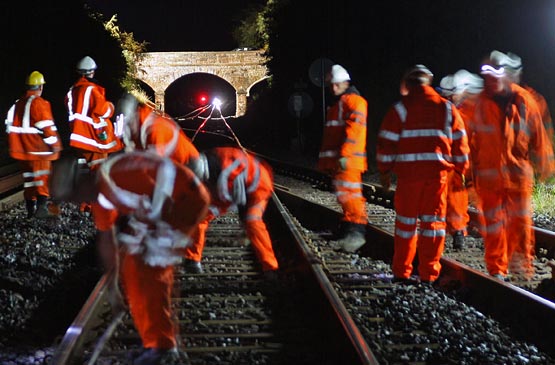|
Are you losing the will to live too? The relentless stream of ifs buts and maybes in advance of this month’s comprehensive spending review (or ‘benefits bonfire’ as some have dubbed it) must be driving most of us to the edge of sanity. The media is besotted with conjecture about it. Yes, a very dark cloud is looming but must we have so many hours of airtime devoted to wet-finger forecasting of where it might dump its load? And it might spell the end for RSSB and the HSE, so it does potentially have a silver lining.
Of course, the impact of any cuts will have a disproportionately limited impact the higher up the food chain you sit. Isn’t social justice a wonderful thing? The lengths to which some will go to secure their already lofty living standards were rightfully exposed by Rail magazine (Issues 652 & 653) when it lifted the lid on Network Rail’s manipulation of its RIDDOR (Reporting of Injuries, Diseases and Dangerous Occurrences Regulations) figures.

Conventional wisdom dictates that any safety-critical industry will suffer between eight and 15 minor injuries for every serious one. In the context of this story, ‘minor’ is defined as any accident requiring three or more days off before the casualty’s full range of normal duties can be resumed - the point at which it becomes formally reportable under RIDDOR.
For some time, the Office of Rail Regulation has held the view that Network Rail was under-reporting such accidents to the tune of around 500 a year. Not only did the published figures allow the company to make highly dubious claims about its improving workforce safety performance, they helped to ramp up Director bonus payments as data from the Management Safety League Tables is in part used to determine their level. Consequently, despite the deaths of three trackworkers, NR’s Remuneration Committee this year approved £2.4 million in extra payments to the company’s top brass, for whom the bread line was already a distant dot.
Rail’s investigation - prompted by Bob Rixham, Unite’s Railway Officer, with assistance from the ORR and internal Network Rail documentation - reveals “a mix of incompetence, obfuscation and, sadly, the conscious choice of a perverse policy. This favourably massaged worker accident statistics to make NR’s safety record look better than it really is. It effectively reduced the number of recorded accidents by 50%.”
That ‘perverse policy’ was the firm’s interpretation of the three-day rule - one which resulted in accidents not being reported under RIDDOR if the individual involved could undertake ‘light duties’ following a workplace accident. This approach was “obscure and wrong”, according to the ORR. The fact that each RIDDOR report resulted in a points deduction from the Management Safety League Table provided an obvious financial incentive not to report incidents. On occasions when the flouting of requirements had been exposed, Iain Coucher pointed the finger of blame at local managers who did not reach “a clear understanding with the person on their return to work as to what they are and are not capable of.” But Bob Rixham had amassed a dossier of evidence suggesting that “this has been a systematic policy, steered by top-level decisions.”
|
| ...this has been a systematic policy, steered by top-level decisions. |
|
It is worth recording that Network Rail’s new Chairman, Rick Haythornthwaite, has recently scrapped the points system and, following intervention from Unite and the ORR, the company’s latest accident figures are shifting towards the numbers that ought to be expected. In terms of major injuries, the rate is high. Haythornthwaite’s actions, whilst clearly to his credit, have not [yet] gone so far as to demand the partial repayment of those bonuses which, according to Rixham, were the function of “a safety culture shambles”. He is demanding that Haythornthwaite does “the right thing”. Any right-minded person would support that position.
You need only look at football to understand the arrogance that generally accompanies wealth. And make no bones about it, Network Rail’s senior managers are wealthy beyond merit. Whilst the public face of the company extols a ‘safety first’ ethos, its leaders’ behind-the-scenes actions rarely match the aggrandisement. So it is refreshing to see their failings - resulting either from ignorance or deceit, you choose - laid bare by Bob Rixham, a clued-up no-nonsense champion of the frontliner, with his coach and horses.
If anyone remained to be convinced about the need to overhaul Network Rail, this episode should surely tip the balance. When it comes to safety, we have the right to expect transparency from its senior management, not to mention a resolute work ethic to justify their eyewatering salaries. When the government’s cuts eventually bite, let’s hope that teeth are sunk deeply into the poisonous bonus expectations of these have-lots.
|